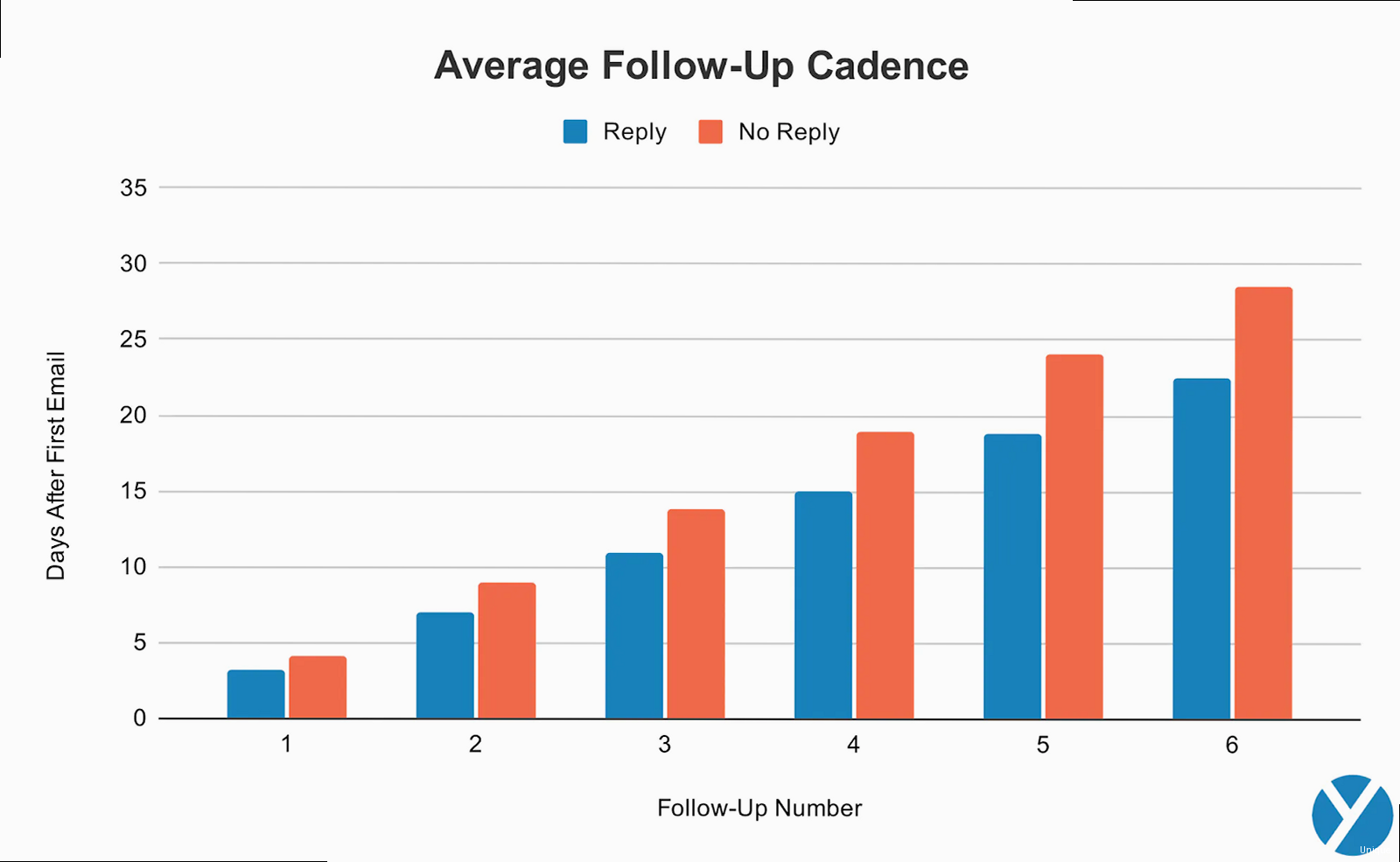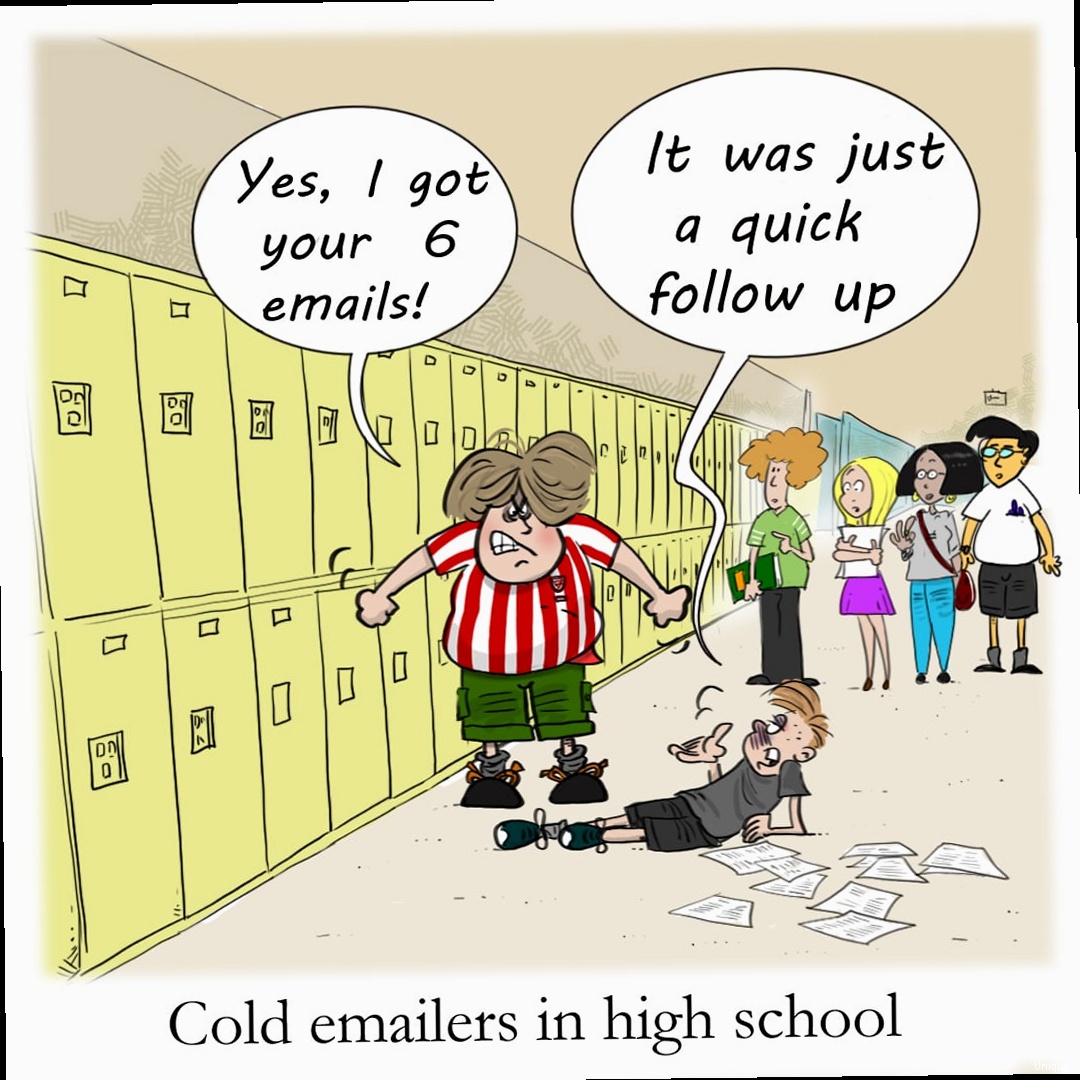Best Cold Email Follow-Up Strategies for Higher Response Rates
Crafting a compelling cold email is only half the battle. Following up effectively is crucial for turning those initial outreach efforts into meaningful conversations and ultimately, conversions. This article provides a comprehensive guide to implementing strategic cold email follow-ups that boost response rates and maximize your outreach impact. We’ll explore specific techniques, timing considerations, and personalized approaches to ensure your follow-ups cut through the noise and resonate with your target audience.
Table of Contents
- Optimizing Timing and Frequency for Follow-Ups
- Leveraging Personalization for Engaging Follow-Ups
- Crafting Different Types of Follow-Up Emails
- Tracking and Measuring Follow-Up Performance
Optimizing Timing and Frequency for Follow-Ups
 follow ups - A calendar or graph visualizing the ideal timing and frequency for cold email follow-ups." title="Illustration for A calendar or graph visualizing the ideal timing and frequency for cold email follow-ups." width="512" height="512" / class="wp-image-167 wp-image-12400">
follow ups - A calendar or graph visualizing the ideal timing and frequency for cold email follow-ups." title="Illustration for A calendar or graph visualizing the ideal timing and frequency for cold email follow-ups." width="512" height="512" / class="wp-image-167 wp-image-12400">- Initial Email: Send on a Tuesday, Wednesday, or Thursday morning for optimal open rates.
- Follow-Up #1: Send 3-5 business days after the initial email.
- Follow-Up #2: Send 5-7 business days after the first follow-up.
- Research your target audience: Use LinkedIn or industry publications to understand their typical workday and communication preferences.
- Test different timings: A/B test different follow-up schedules to see what works best for your audience. For example, send one batch of follow-ups on a Monday morning and another on a Wednesday afternoon and compare the results.
# Example scenario in Lemlist:
# 1. Create a campaign and upload your contact list.
# 2. Design your initial email and follow-up sequence.
# 3. Set the delay between emails (e.g., 4 days for Follow-Up #1).
# 4. Enable auto-follow-ups based on "no reply" condition.
- Set frequency caps: Limit the number of follow-ups to a reasonable amount (typically no more than 3-4) to avoid overwhelming prospects.
- Include an unsubscribe link: Provide recipients with a clear and easy way to opt-out of your email list. This demonstrates respect for their preferences and helps maintain a clean list.
- Monitor bounce rates: Regularly review your bounce rates and remove invalid or inactive email addresses from your list. High bounce rates can negatively impact your sender reputation.
Leveraging Personalization for Engaging Follow-Ups

- Acknowledge the initial email: Start your follow-up by referencing your previous message and briefly summarizing its key points. For example: “Following up on my email from last week regarding [topic], I wanted to share a few more insights…”
- Refer to specific content: If you’ve previously shared a blog post, case study, or other content, mention it in your follow-up and highlight the relevant takeaways. “As mentioned in my previous email, our case study on [company name] demonstrates how we helped them achieve [specific results].”
# Example using dynamic fields in Lemlist:
# Hi {{firstName}},
# I noticed that {{company}} is currently [mention a specific challenge or opportunity based on their industry or website].
# We've helped similar companies like {{competitor}} achieve [specific results]. I'd love to chat about how we can help you too.
- Mention mutual connections: If you and the recipient share a connection on LinkedIn or another professional networking platform, mention it in your follow-up. “I noticed we’re both connected to [name] on LinkedIn. I thought you might be interested in…”
- Reference common interests: If you know the recipient’s interests or hobbies (e.g., from their social media profiles or company website), mention them in your follow-up to create a more personal connection. “I saw that you’re a fan of [sports team/hobby]. That’s great!” (followed by a relevant business connection).
- Research their company and industry: Before sending your follow-up, take the time to research the recipient’s company and industry. Identify the key challenges and opportunities they’re facing.
- Highlight relevant solutions: In your follow-up, explain how your product or service can help them overcome those challenges and achieve their goals. “Based on my research, I understand that [company] is facing challenges with [specific problem]. Our solution can help you [achieve specific results].”
- Provide specific examples: Back up your claims with specific examples and case studies that demonstrate how you’ve helped similar companies solve similar problems.
Crafting Different Types of Follow-Up Emails
Not all follow-up emails should be the same. Varying the content and approach of your follow-ups can help keep prospects engaged and increase your chances of getting a response. Here are a few different types of follow-up emails you can use: The Value-Added Follow-Up This type of follow-up focuses on providing additional value to the recipient, such as sharing a relevant article, offering a free resource, or providing a helpful tip.# Example Value-Added Follow-Up:
Subject: Quick Tip to Improve Your [Specific Metric]
Hi [Name],
Following up on my previous email, I wanted to share a quick tip that could help you improve your [specific metric].
[Share a brief, actionable tip related to their industry or needs].
I'd be happy to discuss this further and share more strategies for [achieving specific results].
Best,
[Your Name]
# Example Question-Based Follow-Up:
Subject: Quick Question About Your [Specific Area]
Hi [Name],
Following up on my previous email, I'm curious to know: What are your biggest challenges when it comes to [specific area]?
Understanding your challenges will help me determine if our solution is a good fit for your needs.
Let me know your thoughts!
Best,
[Your Name]
# Example Resource-Sharing Follow-Up:
Subject: Case Study: How [Company] Achieved [Results] with [Your Solution]
Hi [Name],
Following up on my previous email, I thought you might be interested in our recent case study featuring [Company].
In this case study, we demonstrate how we helped [Company] achieve [specific results] using [your solution].
You can download the case study here: [Link to case study]
Let me know if you have any questions!
Best,
[Your Name]
# Example Break-Up Email:
Subject: Reaching Out One Last Time
Hi [Name],
I've reached out a couple of times regarding [topic] but haven't heard back.
I'm assuming that this isn't a priority for you at the moment, so I'll stop reaching out.
If anything changes, please feel free to reach out.
Best,
[Your Name]
Tracking and Measuring Follow-Up Performance
To optimize your cold email follow-up strategy, it’s essential to track and measure the performance of your campaigns. Monitoring key metrics will help you identify what’s working and what’s not, allowing you to make data-driven adjustments and improve your results over time. Key Metrics to Track Here are some of the most important metrics to track when measuring the performance of your cold email follow-ups:- Open Rate: The percentage of recipients who opened your email. This metric indicates the effectiveness of your subject line and sender name.
- Click-Through Rate (CTR): The percentage of recipients who clicked on a link in your email. This metric indicates the engagement level of your content and the relevance of your offer.
- Response Rate: The percentage of recipients who responded to your email. This is the ultimate measure of your campaign’s success.
- Bounce Rate: The percentage of emails that were not delivered to the recipient’s inbox. High bounce rates can negatively impact your sender reputation.
- Conversion Rate: The percentage of recipients who took a desired action (e.g., scheduled a call, requested a demo, made a purchase) after interacting with your email.
- Add UTM parameters to your links: UTM parameters are tags that you add to your URLs to track the source, medium, and campaign associated with each link click. For example:
https://www.example.com/?utm_source=email&utm_medium=followup&utm_campaign=coldemail_campaign - Track conversions in Google Analytics: Set up conversion goals in Google Analytics to track the number of recipients who take a desired action after clicking on a link in your email.
- Analyze your data: Use Google Analytics reports to analyze the performance of your cold email follow-ups based on the UTM parameters you added and the conversion goals you set up.
- Subject Lines: Test different subject lines to see which ones generate the highest open rates.
- Email Content: Test different messaging, offers, and calls to action to see which ones resonate best with your audience.
- Timing and Frequency: Test different follow-up schedules to see what works best for your target audience.
- Personalization Techniques: Test different personalization techniques to see which ones generate the highest response rates.
- Identify trends: Look for patterns in your data to identify what’s working and what’s not. For example, are certain subject lines consistently generating higher open rates? Are certain types of content resonating better with your audience?
- Implement changes: Based on your findings, make changes to your follow-up strategy. For example, if you’re seeing low response rates, try testing different messaging or offers.
- Track your progress: Monitor your key metrics after implementing changes to see if they’re having a positive impact.
- Repeat the process: Continuously analyze, iterate, and track your progress to optimize your cold email follow-up strategy over time.
